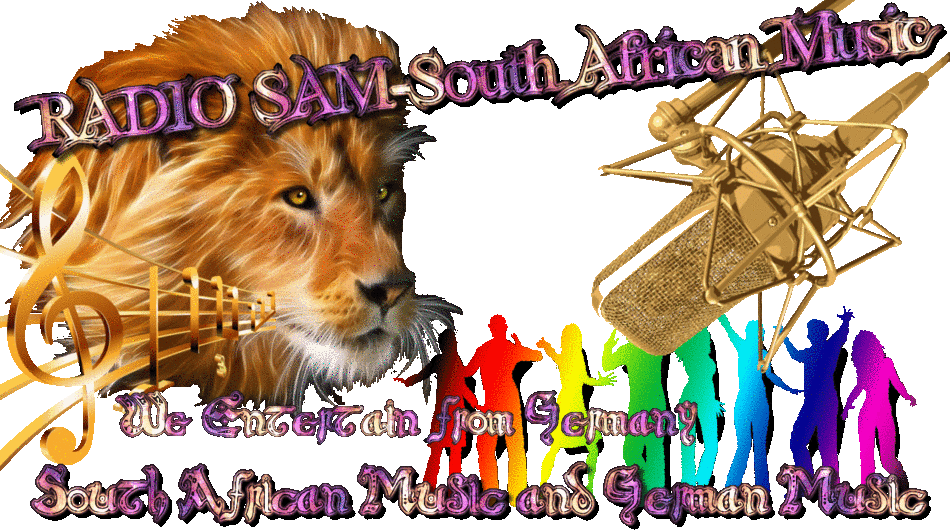Radio Sam Advertiseing Page
|
|
|||||||||||||||||||||||||||||||||||||||||||||||||||||||||||||||||||||||||||||||||||||
|

Afrikaans music was primarily influenced by Dutch folk styles, along with French and German influences, in the early twentieth century. Zydeco-type string bands led by a concertina were popular, as were elements of American country music, especially Jim Reeves. Bushveld music based on the Zulu were reinterpreted by such singers as Marais and Miranda. Melodramatic and sentimental songs called trane trekkers (tear jerkers) were especially common. In 1973, a country music song won the coveted SARI Award (South African Music Industry) for the Song of the Year - "My Children, My Wife" was written by renowned South African composer Charles Segal and lyricist Arthur Roos. In 1979 the South African Music scene changed from the Tranetrekkers to more lively sounds and the introduction of new names in the market with the likes of Anton Goosen, David Kramer, Koos du Plessis, Fanie de Jager, Flaming Victory and Laurika Rauch. Afrikaans music is currently one of the most popular and best selling industries on the South African music scene. After World War I, Afrikaner nationalism spread and musicians like Jewish pianist and composer Charles Segal and accordionist Nico Carstens were popular.
What is Boermusic? Boermusic is an instrumental folk music, dating from the period during which the people who practised it where internationally known as "Die Boere" The Boers of South Africa. It is informal music that is played in a distinctive way and was primarily intended as accompaniment for social dancing. For the purpose of this conversation we exclude other kinds of Afrikaans music from the same period like ballads, serenades and music aimed at passive audiences. What is the Character of Boermusic? It is nearly impossible to put the rich variety of feeling elements, nuances and sounds that form the essence of Boermusic into words. It is an "experience" of strong and unique character that can not be described in music science terms. The concertina was, and is still to this day, the top lead instrument in Boermusic. Apart from the different types of concertinas that are found in Boer music, there are different dance rhythms and variations in accompaniment. It is striking how each artist often develops a unique and recognizable style. Just as amazing is how the different types of concertinas as well as the different geographical regions created divergent disciplines within Boermusic.
Ek wil vanaand gesels oor die prag van Afrikaanse musiek. Dit is nou as daar ‘n woord bestaan soos “prag” en as daar nie is nie moet die taal kenners my asseblief vergewe want ek het nie vanaand ‘n woordeboek langs my nie en ek skryf die taal soos wat ek dink en daagliks in my lewe uitleef. Dit is soos wat die Taal elke dag deur my are vloei en hoe my hart klop vir die Taal, en ek spel Taal met ‘n hoofletter T want ek is geweldig trots op my Taal, vuurwarm en met passie. Dit is die Taal wat ek met my moedersmelk ingedrink het, die Taal van my geskiedenis, die Taal van my herkoms, my Taal van vandag – die Taal Afrikaans! Is dit nie pragtig nie? Die Taal wat so ‘n mooi verhaal vertel en wat homself so gemaklik uitdruk dat selfs die kleinste baba dit kan verstaan. In drie versies vertel die Taal vir jou presies wat ‘n huis is. ‘n Huis is waar my kinders is. Ek is trots op die Taal- my Taal – jou Taal – ons Taal- Afrikaans! Die Taal wat ek met my moedersmelk ingedrink het, die Taal waarin ek dink en skryf, die Taal waarin ek debat voer, die Taal waarin ek droom, die Taal waarmee ek gaan slaap, die Taal waarmee ek opstaan en die mees belangrikste die Taal waarin ek my Skepper kan dien, die Taal waarmee ek na musiek luister, dit is my Taal.
|
|
|||||||||||||||||||||||||||||||||||||||||||||||||||||||||||||||||||||||||||||||||||
|
|
|||||||||||||||||||||||||||||||||||||||||||||||||||||||||||||||||||||||||||||||||||||






















































































































































































-1357989339.gif)













